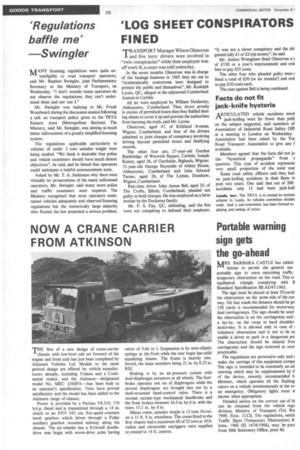Portable warning sign gets the go-ahead
Page 28

If you've noticed an error in this article please click here to report it so we can fix it.
MRS. BARBARA CASTLE has tabled lations to permit the general use portable sign to warn oncoming traffic temporary obstruction on the road. This is equilateral triangle complying with B Standard Specification BS AU47:1965.
The sign must be placed at least 50 yards the obstruction on the same side of the can way. On fast roads the distance should be gr( 150 yards is recommended for motorway, dual carriageways. The sign should be used the obstruction is on the carriageway and a lay-by, on the verge or hard shoulder motorway. It is allowed only in case of voluntary obstruction and is not to be us enable a driver to park in a dangerous po: The obstruction should be cleared fron carriagewayand the sign removed as soor practicable.
The regulations are permissive only and make the carriage of this equipment compu The sign is intended to be essentially an ad warning which may be supplemented by tl of the device, recently recommended b Minister, which operates all the flashing cators on a vehicle simultaneously in the ev an emergency. Obligatory lights must si shown when appropriate.
Detailed advice on the correct use of th can be obtained from the vehicle regu division, Ministry of Transport (Tel. Wa 7999, Extn. 3112). The regulations, entith Traffic Signs (Temporary Obstruction) R tions, 1966 (SI 1474/1966), may be purc from HM Stationery Office, price 8d.












































































































